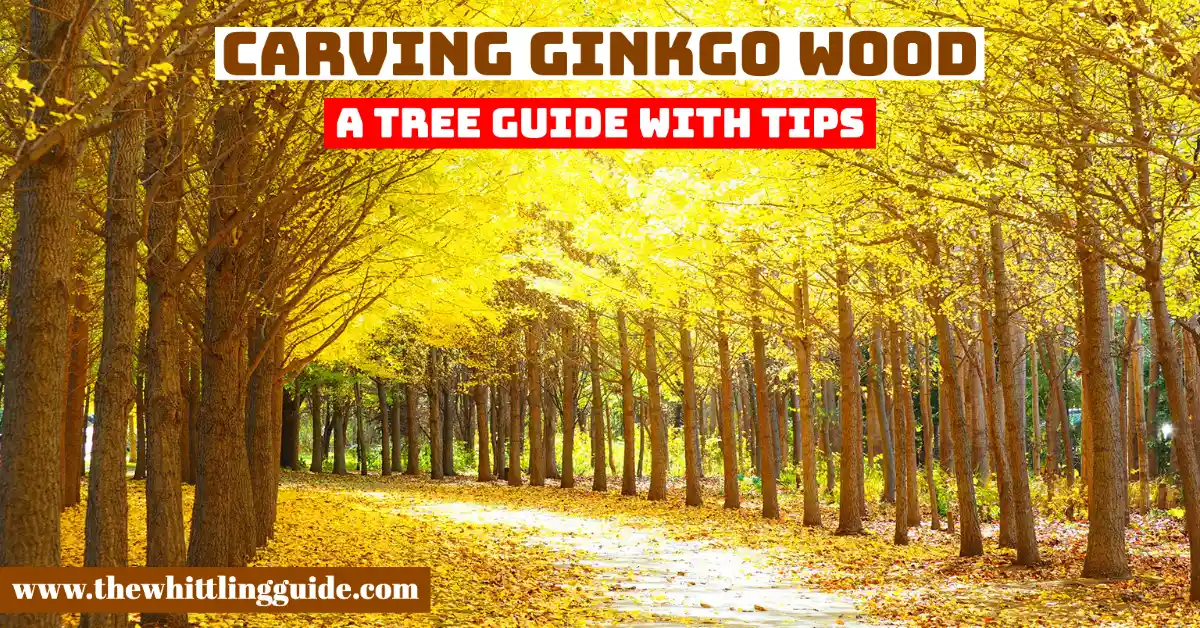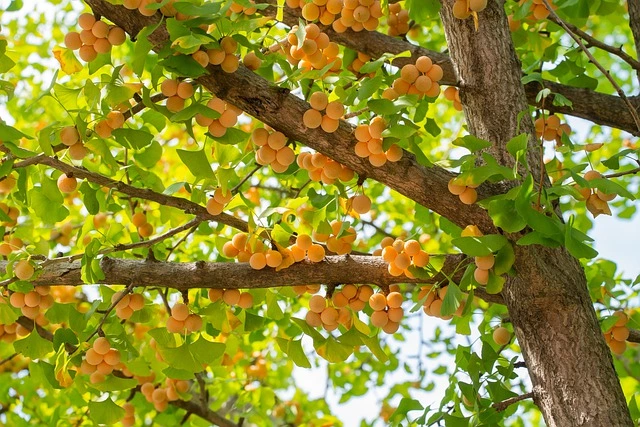
Ginkgo lumber
The Ginkgo is a hard, drought-resistant tree that has found a new place in urban settings as a cultivated tree. Its wild form is native to China. It is often used for making furniture, carved objects, housewares, and bowls. Yet, little information about the properties of its wood is known, which is essential in wood carving, and this article discusses it.
Carving Ginkgo is popular because of the tree’s uniform texture, which makes it a great candidate for woodwork. There has been an increased usage of the species and harvest from the urban trees, making slabs from the small pieces of Ginkgo. The Ginkgo tree grows to 115 feet tall, and the tallest grows to 160 feet.

An insect-resistant wood type that lives long, it has been a treasure in wood carving. The wood is a pale yellow, close to caramel color, with black streaks. When differentiating between females and males, note a foul smell close to rancid butter.
As much as the wood is soft, it has its shortcomings. It makes good carvings, such as bowls, and it is for both carving and turning. It has a fine, uniform texture, and carving with sharp tools leaves a nice sheen. It sands well and gives an excellent finish. Yet, it is too soft to make floors. Quickly dry the wood before it gets stained by fungi.
With the limitations above, purchasing Ginkgo depends on how adventurous you feel, and it is worth the risk considering its beauty. Since urban trees grow faster, they branch early and twist to follow the sun, creating problematic lumber. In that case, learn how to read the grain.
Working with Ginkgo requires you to know its properties first. The grain differs since it can be straight, interlocked, or wavy, and the texture can be medium or coarse. Pay attention to equal growth rings, tension wood, and good color. If you are not sure, ask how the wood was dried.
Ginkgo is easy to work with. It does not select when it comes to hand and machine tools. But, interlocked grain may result in torn grain during operations. It glues and finishes well. The Ginkgo wood is for veneer, plywood, carving, cabinetry, furniture, and musical instruments.
What is ginkgo wood
Ginkgo biloba is known as ginkgo or the maidenhair tree. It is an old type of wood in the world. Ginkgo wood has worked throughout the globe for thousands of years. At first, it was for firewood, but lately, it has gained popularity as a carving wood.
It is an Asian native and fungus- and insect-resistant ornamental tree. It has unique leaves shaped like fans, and veins radiate from the blade. It belongs to the gymnosperm or softwood family.
Its features tolerate cold weather and survive the worst atmospheric conditions of urban areas. However, the plant is an endangered species. It has a sparingly branched trunk up to 30 meters tall and 2.5 meters in diameter. When it is growing, it takes the shape of a pyramid.
The bark is gray and furrows deep on older trees. The texture is corky, and the wood is lightweight. The wood is soft and weak, so it works on ornaments, not items with high traffic. The leaves are fan-shaped, and they resemble the leaflets of the maidenhair fern. They are grown on short, thickened shoots. They are dull gray-green to yellow-green in summer, turn golden yellow in autumn, and fall later in the season.
Ginkgo tree wood uses
Ginkgo tree wood, fruit, and leaves can be used for various things other than carving. These include:
- The ginkgo tree’s leaves are used to fertilize the soil naturally
- It offers excellent shade
- Grown as an ornamental tree
- It produces edible fruit/nuts
- Has medicinal properties (Chinese medicine for asthma, bronchitis, kidney and bladder disorders)
- It has antibacterial properties against bacterial pathogens
Where to get ginkgo wood
The Ginkgo biloba tree is a large ornamental tree found in Asia, North America, and Europe. Since it is considered a sacred plant, it grows close to temples. It grows in yards, gardens, and parks.
It spread around the rest of the world from China as a popular ornamental tree. Since it has spread everywhere, it is no longer a living fossil for a particular place. The bark remains smooth, and the leaves are fan-shaped. Their resemblance to the maidenhair fern has given the tree an alternative name, the maidenhair tree.
Choosing the right ginkgo wood
When choosing ginkgo tree wood, consider what you want to make, size, use, and texture. As much as the Ginkgo tree has been moving places to the extent that its origin is debatable, it has changed for years.
Although it has not changed, it comes in varieties. Although they are pretty, fan-shaped leaves, the trees are either male or female. They make big shades since they grow in large bushes. They grow up to 24 meters high and 12 meters wide; there are also smaller varieties. Remember that mature female trees produce fruit when choosing ginkgo wood of any variety.
Types of the Ginkgo wood
Fairmount
The growth habit separates the Fairmount tree from the rest of the wood. It grows narrow and upright, making it ideal for narrow spaces with plenty of vertical room.
Princeton Sentry
This type is a bit taller and wider than Fairmont and proliferates.
Autumn Gold
Autumn Gold is a canopy tree that requires a lot of space and gives you a beautiful shade. It grows up to 50 feet high and 35 feet wide.
Chase Manhattan
Chase Manhattan is dwarf shrub ginkgo that reaches only a height of 2 meters.
Majestic Butterfly
The ginkgo majestic butterfly has green streaked with yellow. The smaller tree is 10 feet high when mature.
Lacy Ginkgo
Male and female ginkgo cultivars come with different names. When choosing between the two, take note of your needs. A male tree is ideal for low maintenance and does not produce fruit. The lacy cultivar has a textured edge that makes lace.
Where to store your gingko wood
Store your wood in a place far from insects because it gets stained easily. As much as the wood is resistant to harsh conditions, avoid moisture. Keep the wood in partial shade so that they mature.
Tools needed for carving gingko wood
- Chip Carving Knife.
- Chisels.
- Gouges.
- Palm Tool.
- Mallet.
- Power Carver.
- High-Speed Rotary Tool.
- Grain and Sheen: Teak Oil versus Danish Oil Uncovered - January 10, 2024
- The Cherry on Top: Crafting the Perfect Cutting Board - January 9, 2024
- Polyurethane Water-Based vs Oil-Based: Choosing the Right Finish - January 8, 2024